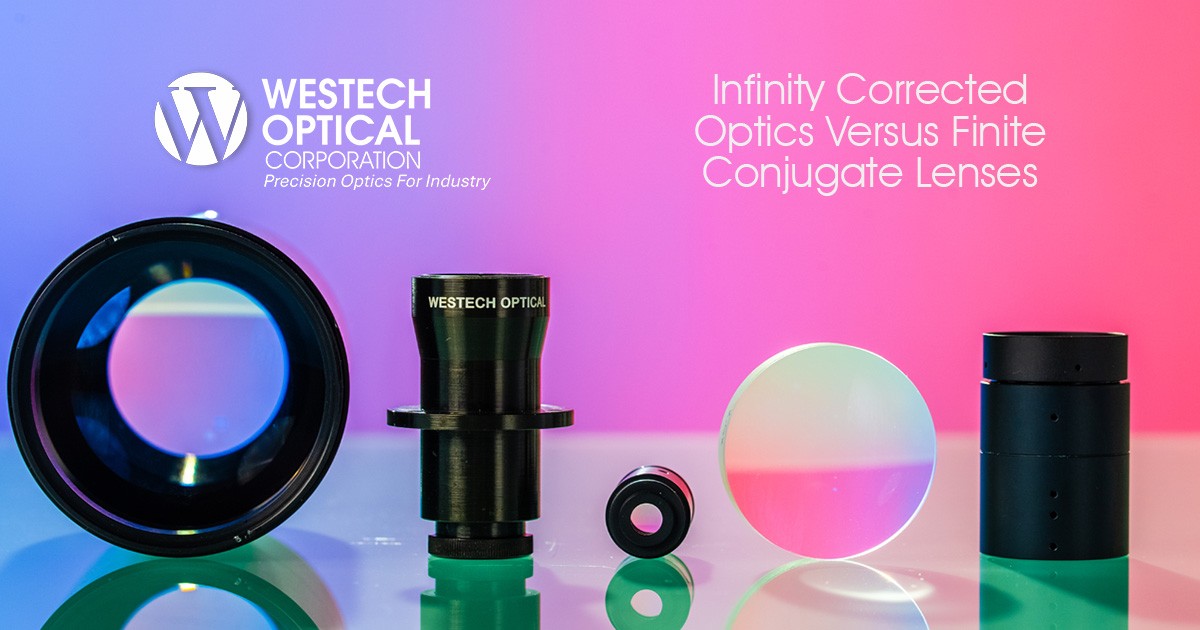March 24, 2025
A finite conjugate lens refers to a type of lens system where the object and the image are both located at finite distances from the lens, rather than at infinite distances. Both the object being viewed and the image that is formed are at specific, measurable distances from the lens, unlike in systems involving "infinity conjugates," where one of the object or image distances is infinitely far away (like most camera lenses).

In the context of imaging, a finite conjugate system considers where the object is at a specific distance from the lens, and the resulting image is also formed at a corresponding finite distance.
A lens designed for a specific, small magnification with finite conjugates will provide better optical performance than a lens optimized for infinity used for finite conjugates.
This optimization becomes more pronounced as the mag becomes closer to 1:1.
What is an Infinity-Corrected Lens?
An infinity-corrected lens is designed for use in systems where the object is effectively at infinity (like in telescopes or certain microscope setups). The design of these lenses assumes that light rays entering the lens are nearly parallel, as if coming from an object far away (at infinity).
What Happens in Finite Conjugates?
When you use an infinity-corrected lens in a finite conjugate scenario, the optical system may not be correctly focused or provide optimum performance. The infinity-corrected lens is engineered to handle light rays converging from an infinite distance, so if the object is located at a finite distance, the rays will not be parallel when they enter the lens, which can result in:
- Defocus: The lens might not be able to focus the object properly, as it expects parallel rays, not divergent ones from a nearby object.
- Aberrations: Using an infinity-corrected lens in this way could introduce optical aberrations, such as blurring or distortions, because the lens is optimized for a different object distance.
What is a Symmetrical Lens Design?
A symmetrical lens design is one in which the two halves of the lens are mirror images of each other. This design typically results in less distortion, better image quality, and improved optical performance when used at 1:1
Contact Westech Optical Corporation for lens design and manufacturing from prototypes to high volume production.
